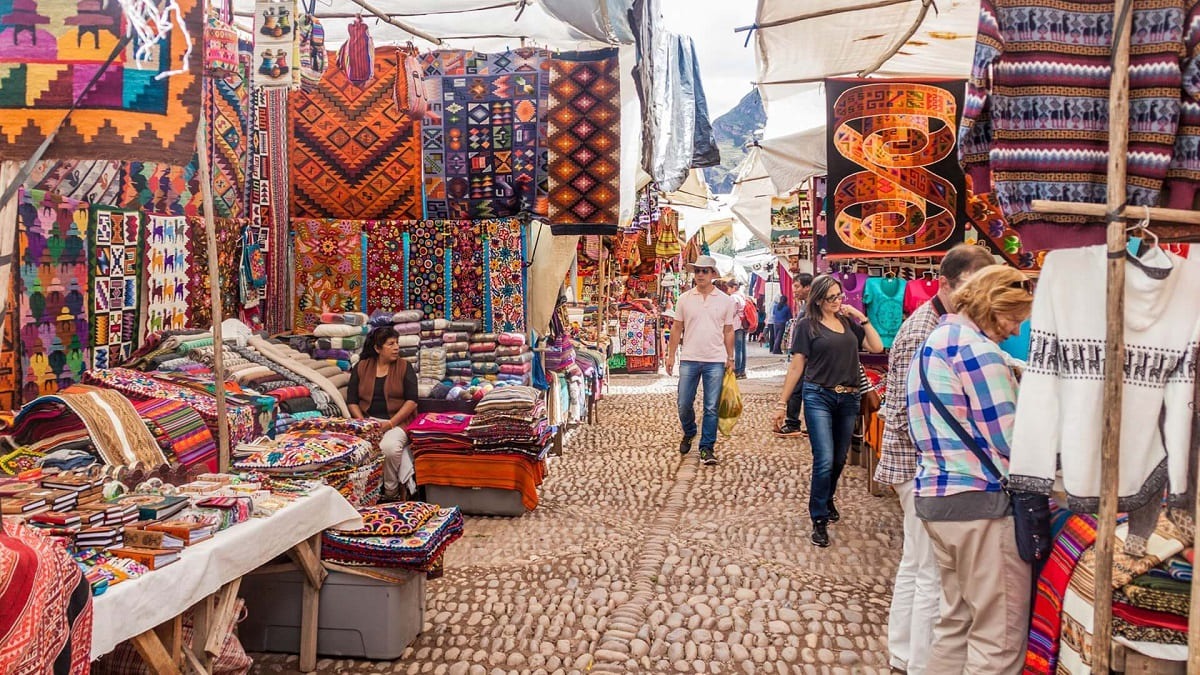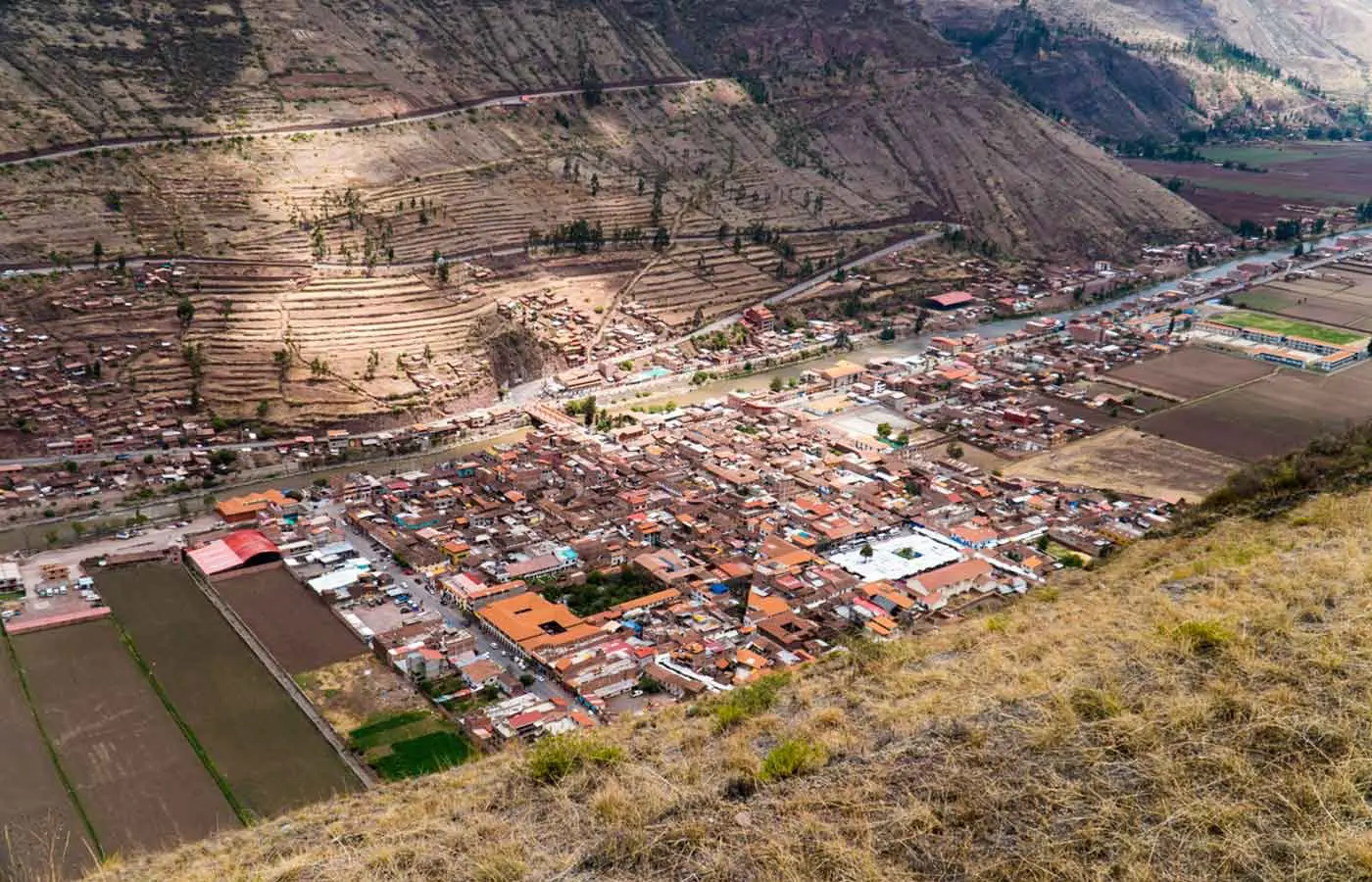
40 minutes from the city of Cusco at the eastern end of the Sacred Valley Peru is the small town of Pisac, and for some time its popularity has grown enormously, not only thanks to its archaeological complex but also to its beautiful craft Pisac market. The craft market is located in the Main Square of the district of Pisac and offers visitors a wide variety of textile products, pottery, and silverware. The knowledge and skill for this type of craft have been inherited from generation to generation.
Even during the Inca Empire 600 years ago, the Pisac area had great agricultural importance; the fertile lands of the valley, bathed by the Urubamba river and the terraces built on the mountain, were used to grow corn, quinoa, potato, kiwicha, etc. During the conquest and like other Inca cities, the Inca city of Pisac was destroyed at the beginning of 1530; the current city of Pisac was built in the valley by orders of the Viceroy Toledo, in the decade of 1570. The chronicles of the conquest, show that the main square soon became an important commercial area and then, in the market that today in the day it is known.
Today, the Pisac market is a sea of wooden posts placed at random and very close together. Most of it is located in the Main Square of Pisac but extends to the small streets in the vicinity. During the week the Pisac market is much smaller, and in most cases, you can only find handicraft vendors; however, the market is much larger on Sundays; the salesmen get to occupy until the last available inch; on this day you will also find food stalls, organic fruits and vegetables grown in the Sacred Valley Peru; and even some stalls with strange concoctions, used since the time of the Incas.

The artisan section of the market is full of articles related to the Inca culture, it can be the ideal place to buy gifts and souvenirs. You will find handmade products made of fine alpaca fiber and some unique pieces of jewelry, remember that in this market it is allowed to haggle.
Take your time to go through the food section. Most things look wonderful, but be careful, not all posts are so hygienic. You can find native and organic products, such as native potatoes, corn, "rocoto", a kind of very hot pepper; try also the Pacay, an "unusual" fruit, on the outside, it looks like a huge pea (pea), with a sweet, refreshing and delicious white fruit, which resembles a piece of cotton.
If you are not traveling through Pisac as part of an organized tour and want to visit the Pisac market on your own, all you have to do is take a taxi from anywhere in the city of Cusco, and tell him to take you to the street Puputi, from this place cars, buses and minivans leave for Pisac, the prices vary between 4 and 7 soles. But if you want to travel more comfortably, you can negotiate a taxi, this could cost between 30 and 50 soles.

To make the most of your time, you may want to incorporate the ruins of Pisac into your itinerary. You can walk from the Main Square of Pisac, you can find the way by asking and follow it on your own; It is a very small town and it is very difficult to get lost.
The archaeological complex of Pisac and course, its market, places you should not miss on your trip to Machu Picchu.
